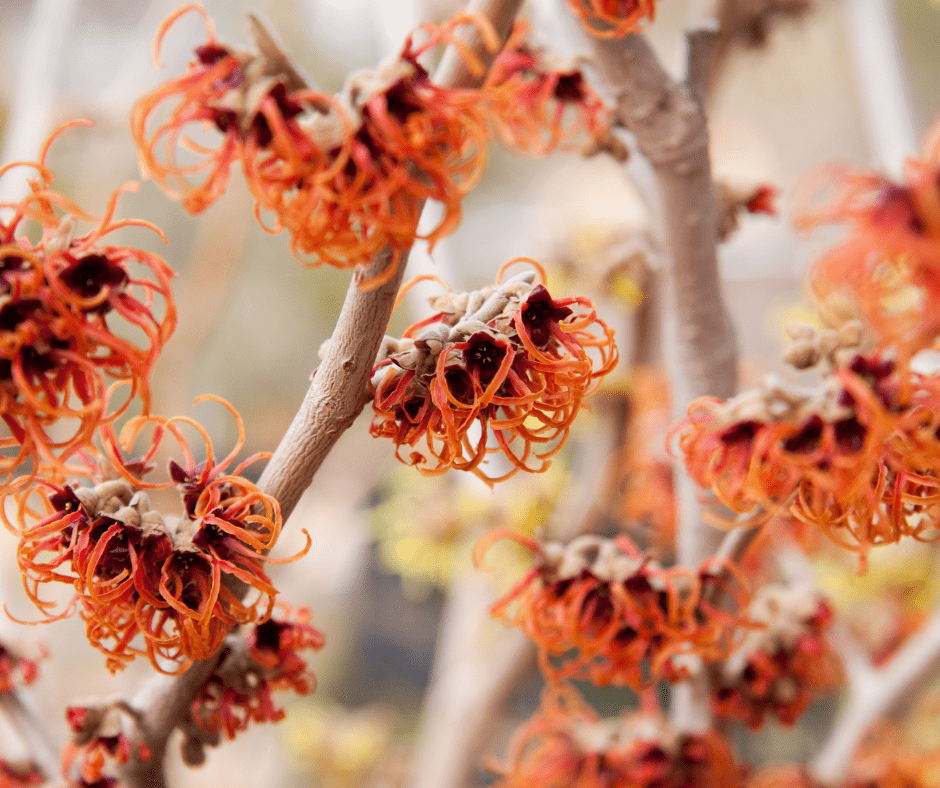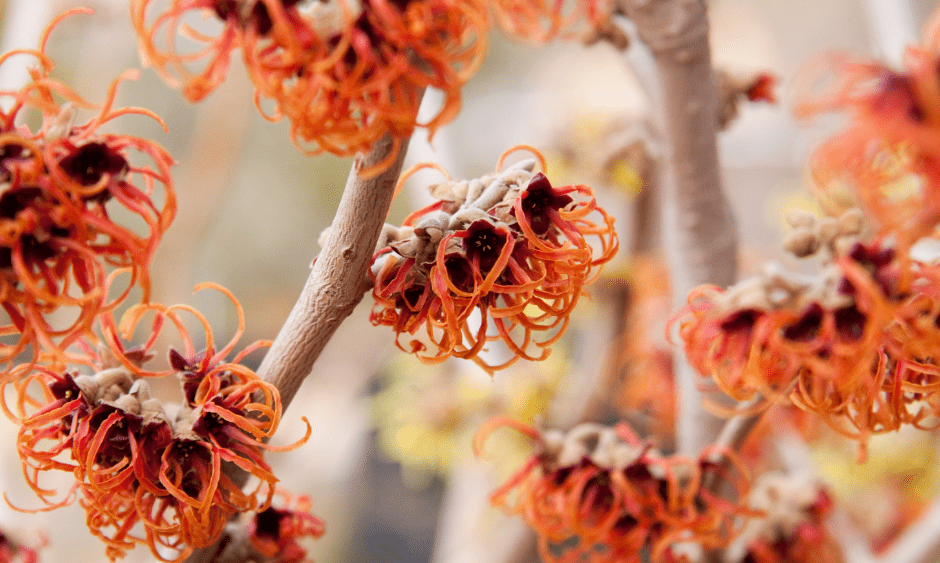Color is important to gardeners. We often select plants because of their flower color and design our gardens so those most brightly colored flowers are most noticeable. We even associate the year’s seasons with color. Yellow daffodils mean spring; red daylilies describe summer, orange leaves equal autumn, but what’s left for winter…green?
I appreciate green in turf and evergreens but green is a complementary color. It works as a background color and does well supporting more colorful plants but when left alone to decorate the winter landscape it just can’t measure up to red, yellow, blue, or orange. I think this is the reason people get so excited to see yellow forsythia blooming out of season. We need color to make winter more exciting.

What many gardeners don’t know is that there are options for winter color. One example is the native Witchhazel (Hamamelis virginiana) which flowers, depending on variety, anytime from October to December. It has fragrant, yellow blooms with 4 strap-like petals which persist up to 4 weeks. Witchhazel is a multi-stemmed deciduous shrub that slowly forms a rounded shape 20 feet tall and 15 to 25 feet wide. It should be planted in full to partial shade in light moist soil.
Witchhazel tolerates urban sites, some drought, and can be container grown. It is also recommended for its beautiful yellow fall color and its general lack of insect or disease problems. Some varieties are available with reddish, bronze, or copper flowers. Hybrid witchhazels (Hamamelis x intermedia) like ‘Arnold Promise’ and ‘Jelena’ share similar growth habits but are in bloom January through March.
If you don’t have the space for witchhazel, you may want to try winter-blooming hellebores. This 12 to 18 inch tall perennial commonly called Lenten Rose (Helleborus orientalis) has it all – dark evergreen foliage, late-winter flowers, deer resistance, and it’s easy to grow. There are actually several species of hellebores including the Christmas Rose and the Stinking Hellebore, but Lenten Rose is later to bloom and is generally more showy than the other species. Hellebores like fertile, slightly alkaline soils with good drainage and full to partial shade and dislikes heat, intense sunlight, and dividing.
Lenten Rose flowers are large 3 to 4 inch blooms that hang downward on the stem. The flowers vary greatly with color including shades of plum, mauve, red, pink, and white; speckling is also common. Blooms which appear in January or February may persist for two months or more. Once established, hellebores will colonize and form massed groundcovers. They are also extremely drought tolerant.

Winter jasmine (Jasminum nudiflorum) is a hardy deciduous vining shrub that is great for training on a trellis, cascading over a retaining wall, or as a groundcover especially on steep banks. Winter jasmine grows 2 to 4 feet tall and spreads 7 feet wide. Yellow, 1 inch wide, unscented flowers appear from January to March with February being the peak month. Winter jasmine blooms gradually, not in one big flush, and the flowers show up great against its bright green stems. Vines root readily where they touch the soil so divisions are easy to make. On good sites the plant has the potential for becoming a weed because of its prolific growth.
There are many other shrubs and vines that bloom in winter. Wintersweet, Japanese camellias, Japanese flowering apricot, and Star magnolia are just a few. Any one of these plants can you help you spruce up the greens and browns of your winter landscape with vibrant colors. A few even have the added bonus of being sweetly scented.
— Kelly Jackson, Christian County Extension Agent






